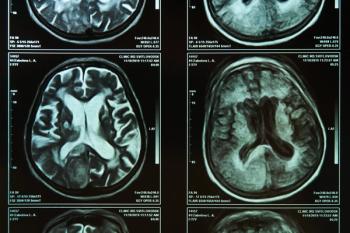
Hyperbaric Oxygen Therapy: An Innovative PTSD Treatment for Veterans
Key Takeaways
- HBOT leverages the "Hyperoxic–Hypoxic Paradox" to activate cellular repair pathways, enhancing neuroplasticity and angiogenesis in PTSD-affected brain regions.
- Clinical trials show HBOT significantly improves PTSD symptoms and brain connectivity, with sustained benefits observed years after treatment.
New research reveals hyperbaric oxygen therapy as a promising treatment for chronic PTSD, enhancing brain function and providing lasting symptom relief.
CLINICAL CONVERSATIONS
New research shows the promising potential of hyperbaric oxygen therapy (HBOT) as a biologically-based approach to improving long-term posttraumatic stress disorder (PTSD) symptoms in veterans and other affected individuals. In a September 2025 study, HBOT not only significantly enhanced brain function but also provided relief for individuals who did not see symptom relief with typical PTSD treatments.1,2
In honor of Veteran’s Day, Psychiatric Times sat down with Shai Efrati, MD, the cofounder and chairman of the Medical Advisory Board at Aviv Clinics, and Keren Doenyas-Barak, MD, the head of the PTSD program at the Sagol Center for Hyperbaric Medicine, to discuss this potential treatment.
Psychiatric Times: Can you describe HBOT? How is it believed to improve PTSD symptoms?
Shai Efrati, MD, and Keren Doenyas-Barak, MD: In hyperbaric medicine, we use controlled changes in the environment to achieve specific biological goals. To create this controlled environment, patients are treated inside a chamber where we can precisely regulate both pressure and the composition of gases. Different HBOT protocols are designed to elicit different biological responses.
When it comes to brain injuries and PTSD, we utilize what we call the “Hyperoxic–Hypoxic Paradox.” Patients are seated in a multiplace chamber alongside other patients and a professional attendant. We gradually compress the chamber with normal air to 2 atmospheres absolute (ATA), and the patients breathe 100% oxygen through a mask. This increases the oxygen pressure in the blood from about 100 mmHg to roughly 1400 mmHg. Then, every 20 minutes, patients are instructed to remove the mask, causing a sharp drop in oxygen levels, from hyperoxic to normoxic. Although oxygen levels remain well above normal, cells interpret this rapid decline as a signal of hypoxia.
This “perceived hypoxia” in a hyper-oxygenated state triggers a cascade of cellular repair pathways that are usually activated during low-oxygen stress—but without the actual damage caused by true hypoxia. The result is a powerful regenerative signal: stimulation of neuroplasticity, proliferation and migration of stem cells, angiogenesis (formation of new blood vessels), modulation of inflammation, and enhancement of mitochondrial metabolism. Altogether, these processes promote tissue repair in injured brain regions.
In PTSD, it is now well established that severe emotional trauma can lead to enduring changes in brain activity and even in the brain’s structural integrity. These invisible wounds, observable today through advanced imaging techniques such as functional MRI and diffusion tensor imaging, typically involve alterations in the hippocampus, prefrontal cortex, and amygdala, key regions within what is known as the fronto-limbic circuit. Such changes are often associated with a reduced likelihood of improvement through psychotherapy. In our randomized, controlled trials of combat veterans with chronic, treatment-resistant PTSD, a 60-session HBOT protocol led to significant symptom improvement. Imaging confirmed restoration of fronto-limbic connectivity, increased activity in prefrontal and hippocampus, and improved white-matter integrity, all correlating with symptoms of recovery.
Clinically, patients report fewer nightmares and flashbacks, less hyperarousal, and an overall sense that “the past has become the past.” The traumatic event becomes a memory that can be integrated into one’s life narrative, rather than an emotional, ever-present threat that continuously replays within the mind.
PT: Approximately 50% of patients with PTSD do not respond to guideline-recommended therapies. Can you share any research or insights on brain activity and structure as key contributors to this treatment resistance?
Efrati and Doenyas-Barak: The high nonresponse rate to guideline-recommended therapies is, in our view, largely explained by the fact that PTSD has been treated as a purely psychological disorder, while the underlying biological injury was not well targeted.
Neuroimaging and physiological data consistently show a characteristic pattern: hyperactivation of the amygdala and other limbic structures, hypoactivation of the prefrontal cortex, and reduced activity and volume in the hippocampus, along with disrupted connectivity between these nodes. In functional terms, the brain fails to properly integrate the traumatic memory as belonging to the past. The implicit memory, which harbors the emotional and somatic components of the experience, remains dominant, while the explicit, coherent, and context-related memory is incomplete or fragmented. This gap between implicit and explicit memory leads to the repeated re-experiencing of the trauma without a coherent narrative to contain it.
Traditional psychotherapies and medications do not target the injured circuits. And as the metabolic and structural abnormalities persist, the brain remains primed for hypervigilance and intrusive recollections and resistant to memory integration. This may explain why many patients, especially those with long-standing, severe combat-related PTSD, remain symptomatic despite adequate psychotherapy and pharmacotherapy.
In our studies, we deliberately enrolled veterans whose PTSD had persisted for years despite guideline-based care. In this group, we could still demonstrate that when you restore brain network integrity with HBOT, symptoms can recede substantially supporting the concept of PTSD as a chronic, but treatable, brain wound.
PT: How can HBOT improve outcomes for veterans with PTSD?
Efrati and Doenyas-Barak: In our randomized, sham-controlled trial of Israeli combat veterans with chronic, treatment-resistant PTSD, we observed several clinically meaningful benefits from a 60-session HBOT protocol:
- Symptom reduction: CAPS-5 scores significantly decreased in the HBOT group, with significant improvement in re-experiencing, avoidance, negative mood/cognition, and hyperarousal clusters, while the sham group showed no change.
- Functional recovery: Many veterans who had been unable to work, study, or maintain relationships were able to return to employment, build or sustain families, and re-engage socially following treatment.
- Biological repair: fMRI and DTI demonstrated restoration of fronto-limbic activity and connectivity, including improved recruitment of the dorsolateral prefrontal cortex and hippocampus, and improved microstructural integrity of key white-matter tracts.
Importantly, when we followed these veterans approximately 2 years after completing HBOT, the gains were largely sustained. Most had reduced or discontinued psychiatric medications, and the proportion who were stably employed or in long-term relationships had almost doubled. In other words, we did not just see short-term symptom relief; we saw durable functional recovery in a population that had previously been stuck despite best standard care.
PT: Beyond PTSD, do you imagine HBOT could improve cognitive function in general, across other disease states and brain injuries?
Efrati and Doenyas-Barak: Yes, and we already see this in multiple clinical contexts. Over the past decade, our research and clinical work have shown that properly designed HBOT protocols can induce neuroplasticity, enhance brain perfusion, and improve neurocognitive performance in several conditions: traumatic and blast-related brain injuries (including post-concussion syndrome), chronic poststroke syndromes, central sensitization disorders such as fibromyalgia, and age-related cognitive decline.
The key conceptual shift is to recognize the brain as tissue, tissue that can be injured, but also repaired, even years after the initial insult. The target of HBOT is not necrotic brain tissue (which is irreversibly lost and replaced by cerebrospinal fluid) but the metabolically dysfunctional but still viable tissue surrounding it. This metabolic dysfunction tissue can be visualized using advanced multimodal imaging that combines structural and metabolic data.
Dedicated HBOT protocols exploit controlled “hyperoxic–hypoxic paradox” stimuli to activate gene expression pathways associated with growth, angiogenesis, mitochondrial biogenesis, and synaptic remodeling. When applied to the appropriate dysfunctional tissue, these protocols produce measurable, objective changes on brain imaging and neurocognitive testing, not merely subjective improvements.
So, while PTSD represents one important application, the newly developed HBOT protocols should be viewed more broadly as a platform technology—a physiological trigger that can restore and optimize brain function across a range of chronic neurological and neuropsychiatric conditions.
PT: How do you as a clinician initiate a treatment regimen for a patient with PTSD? What advice can you offer your peers?
Efrati and Doenyas-Barak: We always begin with a comprehensive clinical assessment, including trauma history, comorbidities such as depression, substance use, traumatic or blast injury and pain syndromes, as well as risk assessment for suicidality and a review of prior treatments and responses. Trauma-focused psychotherapy and guideline-recommended pharmacologic options remain the first-line standard of care.
HBOT becomes relevant when we are dealing with chronic, functionally impairing, and treatment-resistant PTSD, typically after patients have undergone adequate psychotherapy and received medication but still copes with debilitating symptoms. At that stage, we perform detailed brain imaging that often reveals the biological “wound” associated with PTSD. We then explain the rationale and evidence for HBOT, emphasizing that it is a biological intervention designed to complement, not replace, ongoing psychological care.
Key practical points for clinicians:
- Use evidence-based protocols.
Not all HBOT is the same. The therapeutic effects are highly dose-dependent. Our data are based on a specific regimen, starting with 60 sessions at ~2 ATA, breathing 100% oxygen, 5 days per week, utilizing the Hyperoxic–Hypoxic Paradox approach—with close monitoring inside a multiplace chamber staffed by professional medical tenders. Shortened or manufacturer-recommended protocols are unlikely to induce the same neuroplastic effects and, in some cases, may even lead to opposite, undesired outcomes. - Prepare for emotional turbulence.
As the brain heals and the disrupted memory-encoding networks begin to reconnect, previously inaccessible memories and emotions may resurface. Some patients may experience temporary anxiety, irritability, or emotional lability before improvement occurs. A multidisciplinary team, psychiatry, psychology, and social work, familiar with trauma dynamics is essential to support patients through this process. - Integrate rehabilitation.
Once the core symptoms recede, patients often require structured support to rebuild routines, relationships, work, and identity, much like physical rehabilitation after a fracture or stroke. This phase is crucial to translating neurological recovery into durable functional outcomes.
PT: Is there anything else you want clinicians to know about HBOT or treating PTSD?
Efrati and Doenyas-Barak: A few key messages:
- PTSD is not a character flaw. It is a real biological wound in the brain. Recognizing this reduces stigma for patients and clinicians alike and opens the door to new treatment strategies.
- Objective biology matters. Advanced functional imaging (fMRI, DTI, PET) is beginning to reveal a fingerprint of PTSD, patterns of network dysfunction, and microstructural damage. We are currently running large studies combining imaging, autonomic measures, and blood-based markers to identify robust biomarkers that can support diagnosis, prognosis, and treatment selection.
- HBOT is promising but not a magic bullet. It should be offered to the right patients (chronic, significantly impaired, often treatment-resistant), delivered in centers with expertise in both hyperbaric medicine and trauma, and combined with high-quality psychotherapeutic care.
The goal of treatment should be the restoration of social and occupational functioning, not merely the suppression of symptoms. Many of our veterans describe the treatment as a transformational turning point that promotes occupational and social reintegration and enables the rebuilding of a meaningful and productive life. When treating young veterans with PTSD, the therapeutic endpoint should be nothing less than a full return to productive living. If the psychiatric community embraces both the psychological and biological dimensions of PTSD, we believe that we can significantly improve outcomes for the many patients who are currently labeled “treatment-resistant.” HBOT is one powerful tool in that more comprehensive, biology-informed approach.
PT: Thank you!
Dr Efrati is the founder and director of the Sagol Center for Hyperbaric Medicine and Research at Shamir Medical Center, the director of Research and Development and Head of Nephrology, and the cofounder and chairman of the Medical Advisory Board at Aviv Clinics. Dr Doenyas-Barak is the head of the PTSD program at the Sagol Center for Hyperbaric Medicine.
References
1. Danan D, Grosskopf Y, Mayo A, et al.
2. New study highlights the potential of hyperbaric oxygen therapy as a biologically based treatment for long-term PTSD symptom improvement. News release. September 17, 2025. Accessed November 6, 2025.
Newsletter
Receive trusted psychiatric news, expert analysis, and clinical insights — subscribe today to support your practice and your patients.













